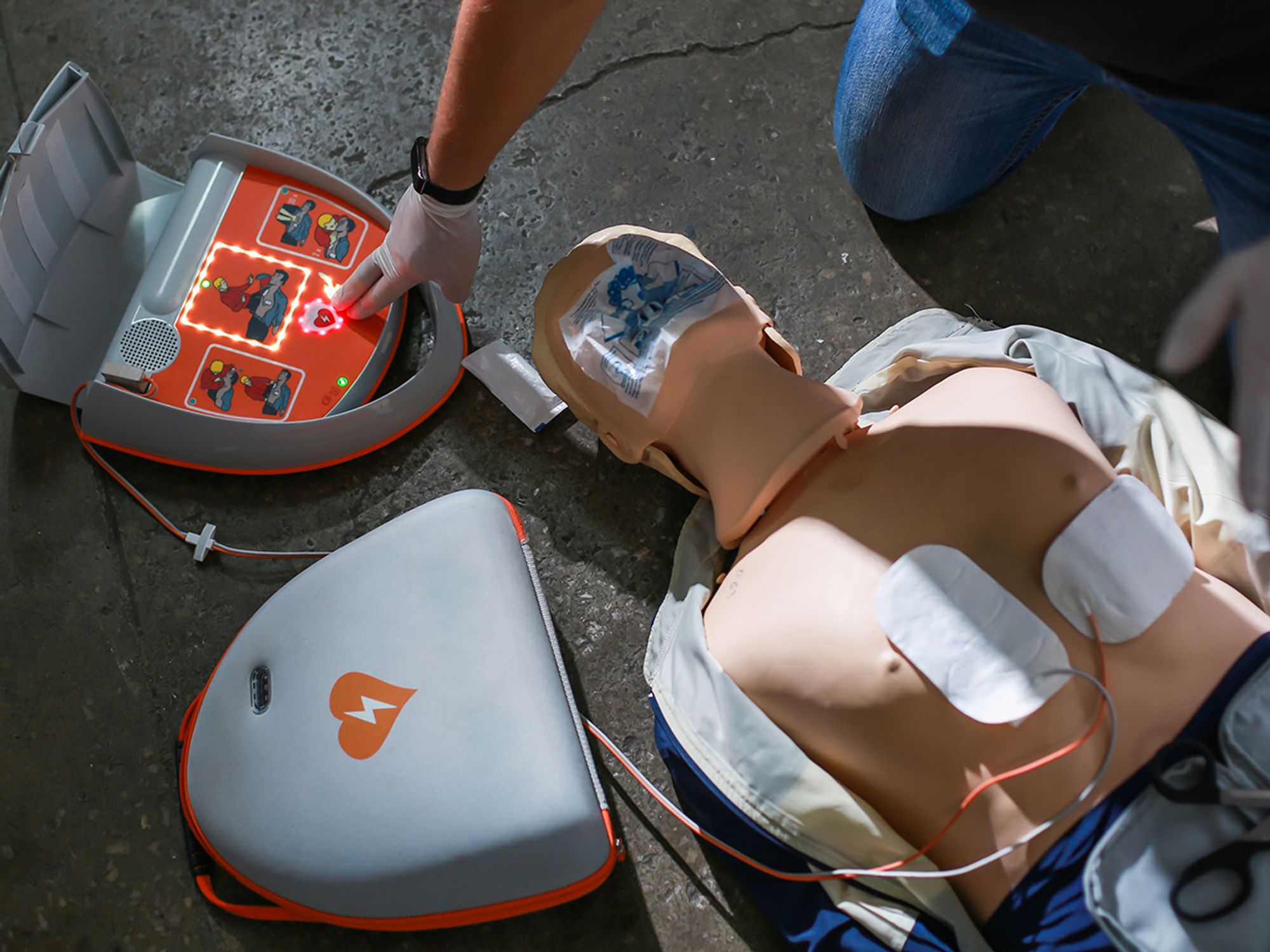Automated external defibrillators (AEDs)

With recent advances in technology, automated external defibrillators (AEDs) are now widely available, safe, effective, portable, and easy to use. They provide the critical and necessary treatment for sudden cardiac arrest (SCA) caused by ventricular fibrillation, the uncoordinated beating of the heart leading to collapse and death. Using AEDs as soon as possible after sudden cardiac arrest, within 3-4 minutes, can lead to a 60% survival rate. CPR is of value because it supports the circulation and ventilation of the victim until an electric shock delivered by an AED can restore the fibrillating heart to normal.
All jobsites are potential candidates for AED programs because of the possibility of SCA and the need for timely defibrillation. Each jobsite should assess its own requirements for an AED program as part of its first-aid response.
A number of issues should be considered in setting up a jobsite AED program:
- Physician oversight
- Compliance with local, state, and federal regulations
- Coordination with local EMS
- A quality assurance program
- A periodic review
The OSHA website at www.osha.gov or the websites of the American College of Occupational and Environmental Medicine at www.acoem.org, the American Heart Association at www.americanheart.org, the American Red Cross at www.redcross.org, and the National Center for Early Defibrillation at www.early-defib.org can provide additional information about AED program development.
